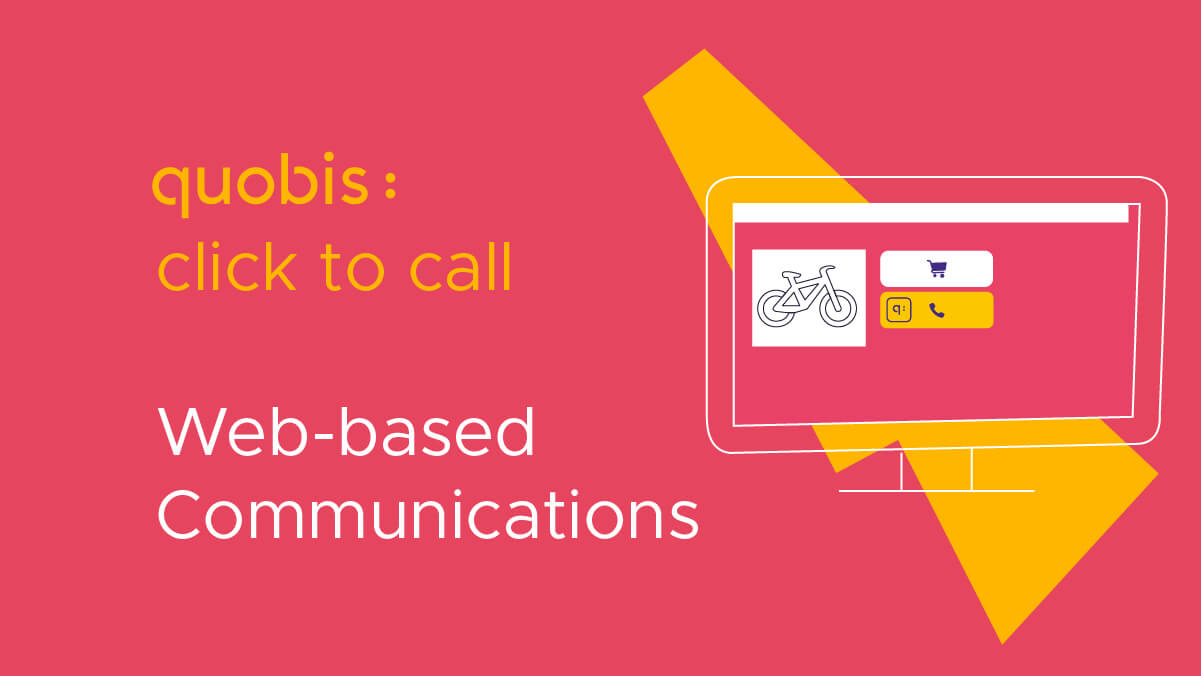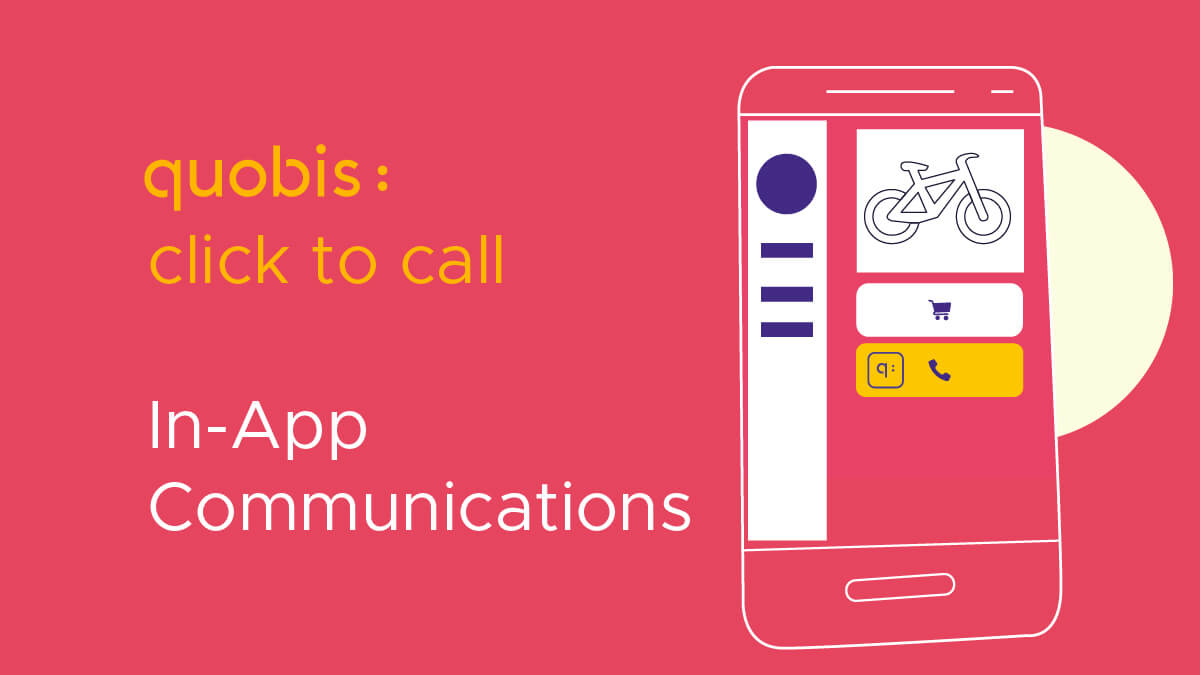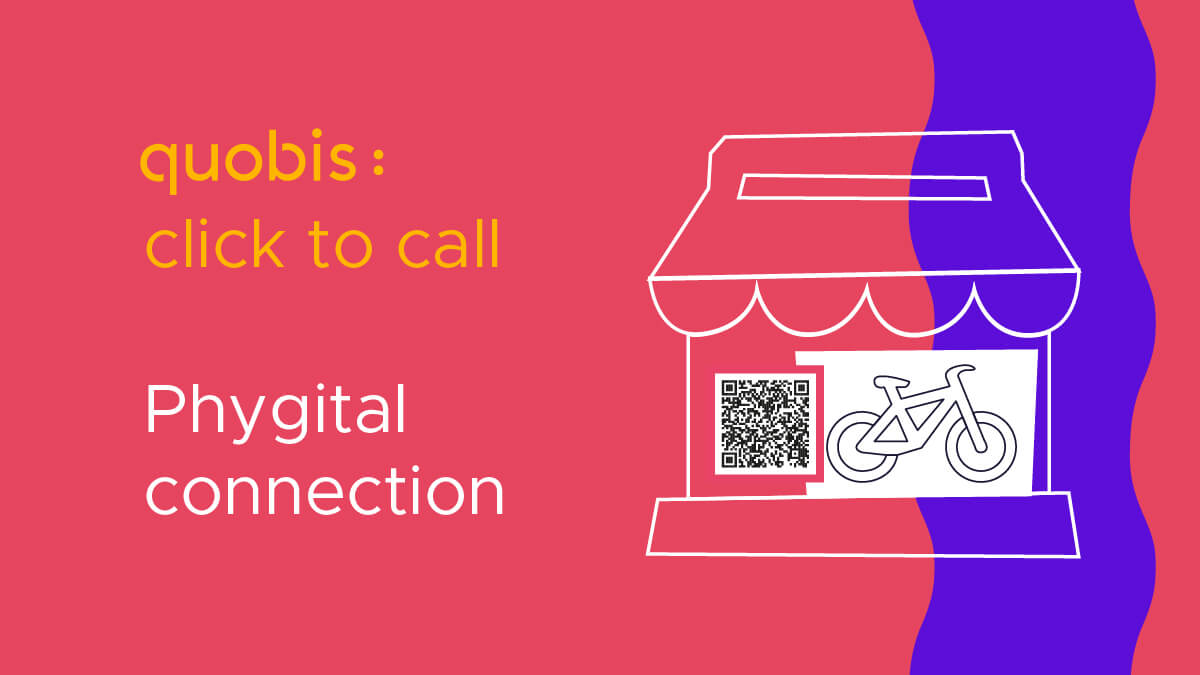Click to call, the most universal channel for communicating with customers
The click to call systems have been living with us for years.
If you have ever been locked in an elevator, you have surely used a click to call system, also if the cashier has swallowed your card and you have asked for help through the intercom, or even if you have used some access control system consisting of a telephone, you might consider that you have had a primitive experience of click to call.
These primitive systems already put on the table some of the needs that a click to call system covers:
- Ubiquity: being where it is needed.
- Minimum response times: direct connection with the agent or contact center.
- Universal: everyone can use it.
- Context information: at least they have that information defined by what you know about the endpoint of origin of the call (where it is located, what its function is…).
- Free: its use does not penalize the user financially.
Well, with the unstoppable advancement of digital communication technologies, they offer new tools capable of delving into all these areas of value, incorporating new channels and modes of communication into the service, such as video, instant messaging, the possibility of sharing files, cobrowsing , etc.
The first big difference with respect to the primitive click to call services is that today the main interface is in the user’s pocket, this is his mobile phone, but also his PC, or new generation IOT devices such as e-calls (which are already part of the usual set of communications in new vehicles).
The fact of making calls using the data rate of their personal devices has a first and clear advantage for the user, and that is the disappearance of the costs associated with the establishment and duration of the call. The fear of receiving undue charges on the telephone bill and the negative consequences that these charges usually have on the reputation of the brand disappear.
Many brands have chosen to include free calls to avoid this type of friction, either voluntarily or by legal imposition, depending on the sector in which they operate. But the cost of these free numbers or “toll free numbers” supposes a considerable punishment to the accounts of the companies. So offering calls from the internet is a win win for both parties.
The universality and ubiquity of the service reach new dimensions, with the possibility of turning virtually any consumer touch point into a fully functional endpoint.
Click to call on websites and ecommerce

Perhaps this is the use case most evoked by the term itself (click to call), although on many occasions it is confused with the “call me later” buttons, whose operation is substantially different, as it is actually a simplified form to request that the company call you at your telephone number.
The user is increasingly familiar with the real-time interaction options offered by websites. ” Live chats ” have been solving user doubts for years, and have been a way of applying artificial intelligence technologies in web services, but sometimes, the text is not enough and it is necessary to go further by offering the possibility of establishing a video call , to do cobrowsing or just a quick voice call to solve an urgent problem.
This use case reflects a reality, that is already palpable in the relationship between brands and users, which is the need to move between different modes of communication at the user’s request, and without losing the continuity of the discourse. Therefore, the click to call of the 21st century must go far beyond voice calls, and include other modes of communication that are already part of the user’s daily life.
An intelligent use of this functionality will keep the user within the web, avoiding leaks to other portals in search of information that has not been found on the page. Let us think, for example, in the case of a wine e-commerce, in which a client is looking for a suitable pairing for a dinner, which he has planned and of which he already knows the menu. Possibly, as much as the webmaster has tried to cover all the possible options, sometimes the existing information is not enough and the user needs a brief assistance. Well, thanks to click to call, it is possible to establish an immediate conversation, even providing contextabout the products that the user is viewing at that moment, and thus speed up the most qualified response. By providing the value of the expert recommendation, other factors such as those linked to price and prior knowledge of the product by the customer take second place.
Another different use, in web contexts, can be the calling of meetings to private rooms , through a link included in an email, SMS, private area of a website or within the information of a calendar event. A very common use case in telemedicine contexts, for example.
The possibilities of routing calls are increased thanks to the possibility of filtering their destination at the source, for example making each url or CTA go to a different agent, depending on the client’s need, thus skipping the IVR with the typical routing options by dialing (press 1 if you want X, 2 if you want Y…). Since it is not necessary to link these channels to numbers or telephone lines, we can create as many as we need without impacting the cost of the infrastructure.
Despite the fact that today the power of IVRs, even at the human language recognition level, are very powerful, what is really smart and sustainable is to avoid the unnecessary use of resources for filtering that we can do at source, also improving the user experience. We can even go further, and offer premium hotlines, by making contact available exclusively when we consider it appropriate.
Click to call in Mobile Applications

Many brands have invested in having their own applications and, in some cases, they are even the backbone of their business model. This is the case of the great representatives of the gig economy (Uber, Globo…), buying and selling services (Wallapop, Vinted…), ehealth applications or other models based on professional advice (Legágitas …).
Offering communication channels embedded in apps offers great advantages for the user:
-
- Free
- Privacy: No need to expose your personal phone number to a stranger; you can control the availability of the channel (limit it by time, or by user); it does not leave a trace on the invoice, nor in the device’s calendar.
- Usability: no need to copy the number, exit the application, paste the phone number, call, delete it from the phonebook when you no longer need it. A link is simply clicked and the communication experience continues as usual.
Also on the service side:
- You can manage the communication channels that you have open in a dynamic way.
- Contain all communications about your service within the app under your control, also avoiding leaks to other more widespread channels (…send it to me via WhatsApp).
- Measure user activity.
- Context information linked to the session as a user of the app.
A very paradigmatic example could be the use of embedded communications in a food delivery application (Uber eats, Glovo…), in which a direct contact route is generated for each order between the user, restaurant and delivery person that is active only from the time the order is placed until it is delivered. In this way, on the one hand, the privacy of all users is respected, since they do not need to share a telephone number; it avoids incurring expenses for the calls, which reduce the low profit margin of the distributors; and all activity is kept under control within the corporate app, allowing malfunctions to be detected (for example, visualizing which delivery drivers receive more calls from customers within).
Click to call on physical elements

Converting any printed material into a direct access to the contact center has as many possibilities as you can imagine. Just to mention a few:
- Business cards.
- Product labels.
- User manuals.
- Posters and signage.
The process is really simple and low cost, for example through the creation of a QR code that opens a webRTC client in your browser, with which to start the conversation, video call, chat, etc.
Imagine, for example, replacing the emergency telephone number of the National Institute of Toxicology in cleaning products with a QR, which, when read with your mobile camera, puts you in direct contact with an agent who will be able to identify you thanks to the information of context, from the first moment the information of the product that has generated the emergency, allowing to react in the shortest possible time, even involving a third party in the conversation in real time (the emergency service).
Of course, this QR-based strategy would also be valid as an element of interaction with television programs, or any projection on a screen such as outdoor advertising.
Click to call e Inbound calls en contact centres
Click to call represents a true revolution in contact centers focused on inbound.
Traditionally, contact center activity is divided into two large groups: outbound (those who make calls) and inbound (those who receive and answer calls). Generally the first group (outbound) is dedicated to sales tasks and the second to assistance and support tasks. Currently, there are companies that seek the flexibility of their teams by integrating both approaches, but the truth is that the tools of one or the other can be substantially different.
Keeping the focus on click to call, where we will recognize the most impact is in inbound activities. The most frequent:
- Technical support.
- Contracts, payments and order management.
- Renewals or improvements for active clients.
In addition to the universality of access, modern click to calls bring with them a diversity of communication modes that make them authentic Swiss army knives of communication. For example, making a query about an invoice through a voice call is not the same as watching a live video stream in which the agent explains the content of the document itself. Another example may be the case of remote-expert, in which the video or photos shared in real time can help the technician to evaluate, with the help of the interested client, the seriousness of an incident without having to travel to the place, and leaving The entire conversation is perfectly documented. As it is digital communication, it is very easy to introduce new capabilities into the service, such as identity verification through image recognition; simultaneous translation; the recognition of keywords (product names, dates, documents…).
From a technological point of view, there are few excuses not to take the step. Even starting from legacy infrastructures, it is possible to incorporate webRTC technology into contact center operations. At Quobis, we have been developing solutions based on webRTC for years capable of interoperating with SIP networks, helping to amortize the investment made without giving up adopting new capabilities demanded by users.


![[Event June 1] Expocontact 2023](https://quobis.com/wp-content/uploads/2023/05/Expoconttact-2023-click-to-call-768x432.jpg)




